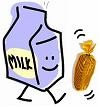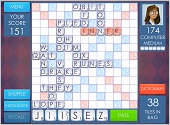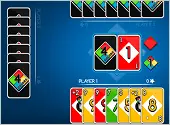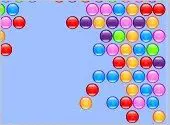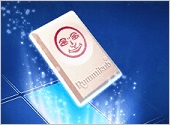- Home
- Better Memory
- Memory Systems
Memory Systems: Image-Based Techniques for Memorizing Almost Anything
Using the memory systems, you can build a filing cabinet in your mind!
In the same way you find documents in a filing cabinet by looking in labeled drawers and folders, these image-based memory techniques can be used to create visual labels in your memory for recalling the information.
Often the problem with remembering isn't that the information is not in your brain, especially if you've studied it. Instead, problems with memory usually involve finding (retrieving) the information from memory.
Memory systems involve the use visualization and substitute words, a mental technique you use to create visual cues for remembering.
The mental images you create act as reminders for the actual facts in your memory. The reason memory systems work so well is that most people can remember images better than abstract knowledge.

Some people don't think they can see images in their mind. To prove that you can, imagine the living room of your house: you can mentally see the location of every sofa, table, and chair, right?
Used together with visualization, the memory systems techniques can greatly improve your memory for names, dates, formulas, abstract facts, definitions, foreign languages, and other information.
Types of Memory Systems
Here are the most common systems (also called memory methods or techniques):
-
Keyword. The Keyword method is a powerful technique for memorizing definitions and foreign vocabulary. Associate the sound of the word with its meaning using a silly or bizarre (and thus memorable) mental image.
The Keyword method uses image-association to create mental labels for the information you want to remember. This method can be used alone or in combination with the other memory systems.
-
Link. The Link method can be used to memorize any type of reading material, including technical articles, poems, lyrics, stories, and even toasts. It's also great for memorizing lists.
To create the first link, associate the first two items with each other using a memorable mental image. For the second link, associate the second image with the third. For the third link, associate the third image with the fourth. And so on.
Each link reminds you of the next item. There is no limit to the number of links you can create in this manner.
-
Peg. The Peg methods let you memorize information in sequence. There are several types of pegs systems, including Number-Rhyme, Number-Shape, Alphabet Sound-Alike, and Concrete Alphabet pegs.
An amazing fact about the memory is that you can re-use the peg systems over and over for different lists. One research study found that participants could memorize 6 different lists using the same pegs. It's possible to include dozens, even hundreds, of pegs in a single list.
-
Loci or Journey. The Method-of-Loci memory technique links information to routes or locations you already know. When the interior of a building is used, it's called the Memory Palace.
The Method of Loci was used by Cicero and other great Roman orators 2,000 years ago to memorize their speeches. It is perhaps the most ancient of the memory systems.
-
Face-Name. This technique is used by memory performers to memorize the names of dozens of people at a time.
Associate a noticeable feature of the person's face such as a large nose or bushy eyebrows with the sound of their name. When you next see that person, the facial feature will instantly remind you of their name.
In effect, this method allows you to attach a mental label of their name to the person's face. As long as you can recall the label, you cannot forget their name - assuming you created a vivid, clear mental image.
-
Phonetic-Number. Use the Phonetic-Number method to memorize numbers that occur in reading material or any long number such as a passcode or phone number.
First, replace each digit of the number with an alphabetic consonant based on a standard conversion table. Add vowels between consonants to create words and phrases. Finally, think of memorable images that represent the words and phrases.
The Phonetic-Number conversion table must be memorized in advance, but you use the same table each time. Note: For an easier and faster way to memorize long numbers temporarily, try direct chunking using dashes or spaces.
Why so many different systems? Because each method is useful for a different kind of information. A good analogy is a toolbox full of different tools.
You would not expect to use a hammer to saw boards, or a screwdriver to pound nails. To build a house (or a strong memory), you must select the right tool for the job.
For example, if you need to memorize foreign language vocabulary (Spanish, German, Japanese, it doesn't matter), you would use the Keyword Method method because it works best.
Read a detailed example of how to create mental images
Memory Systems Organize Your Natural Memory
Research shows that the storage capacity of our memories is practically unlimited. The truth is that all our experiences and possibly everything we've ever learned is stored deep within our minds.
As Dr. Kenneth Higbee, memory expert and author of the book Your Memory: How It Works and How to Improve It, expresses it:
It is the disorganization in your mind, not the amount of material, that hinders memory.... Long-term memory is relatively permanent, and has a virtually unlimited capacity.
A disorganized mind is like a filing cabinet into which documents have been thrown at random, with no folders or labels. When you try to find a particular item, the clutter of the rest hinders your efforts.
However, if all the documents are in labeled folders, and the folders are in labeled drawers, finding what you want is very easy because you simply look under the appropriate heading.
The memory system techniques are what you use to create these labels and folders for your mental filing cabinet.
They can be used to remember people's names, foreign languagues, math formulas, book plots, speeches, procedures, definitions, history, and almost any other material.
Memory systems are different from mnemonic tricks. Both do create mental cues for retrieving information.
But where mnemonic tricks are helpful gimmicks useful only once (for one specific piece of information, such as the acronym "HOMES" for remembering the names of the Great Lakes), memory systems are techniques that can be used over and over.
Memory Systems Demonstration
To get an idea of how these systems work, watch the following BBC video clip. In it, memory expert Andi Bell teaches someone how to use the Link memory system combined with the Loci/Memory Palace system to memorize a list of 30 random items.
Memory expert Andi Bell explains the Link Method
As the video shows, the trick is to use mental images to label or "hook" the information in your brain. When you need to remember a particular item, you first recall the label. This is easy because pictures are much easier to remember than words or abstract concepts.
If you've never used memory techniques before, this video was probably a real eye-opener. If you now make an effort to learn the memory systems, the five minutes you just invested in watching this demonstration may pay off for years to come.
Published: 02/07/2007
Last Updated: 06/11/2020
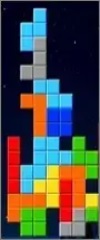
Newest / Popular
Multiplayer
Board Games
Card & Tile
Concentration
Math / Memory
Puzzles A-M
Puzzles N-Z
Time Mgmt
Word Games
- Retro Flash -
Also:
Bubble Pop
• Solitaire
• Tetris
Checkers
• Mahjong Tiles
•Typing
No sign-up or log-in needed. Just go to a game page and start playing! ![]()
Free Printable Puzzles:
Sudoku • Crosswords • Word Search


